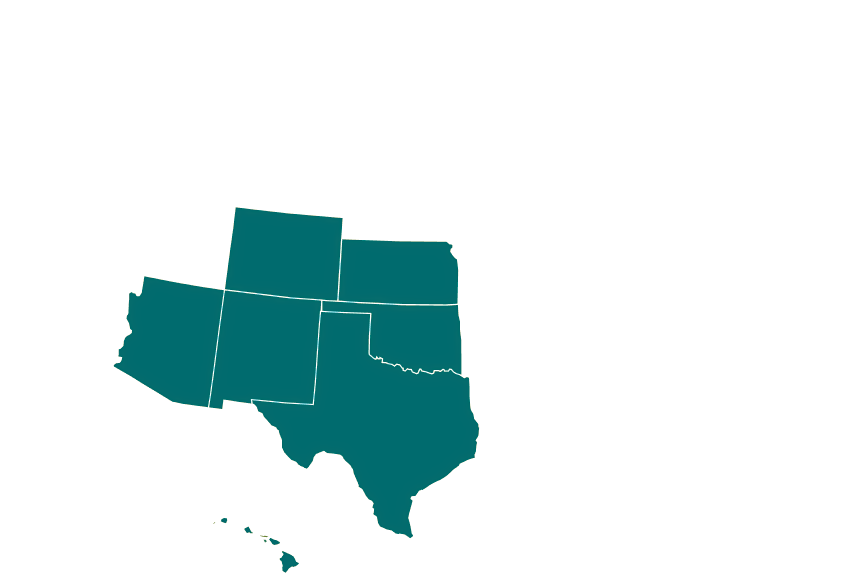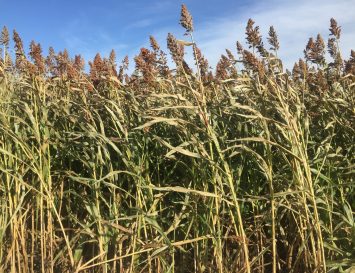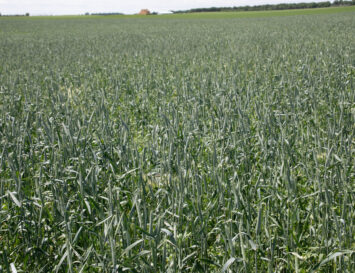Spring Triticale
$0.45
Spring Triticale is a spring planted version of the hybrid cross between cereal rye and wheat. It is commonly planted as a hay or haylage crop and can produce high levels of dry matter under challenging conditions. It is later maturing than oats or barley and will maintain its forage quality for an extended harvest window. The high yield potential and forage quality has made Spring Triticale an increasingly popular option for a wide range of livestock producers. Spring Triticale is a drought tolerant plant that performs well in limited moisture environments. It does well in a wide range of soil conditions including lighter soils or areas with low to moderate levels of salinity.
Need some help? Contact us.
Product Guide
Planting
- Planting Time: Early Spring
- Triticale can tolerate any light frost that may occur after planting.
- Drilled Seeding Rate: 80-100 lbs/acre
- Ideal Drilled Seeding Depth: 1.5″-2”
Fertility
- Triticale requires approximately 9 lbs of N, 11 lbs of P₂O₅, and 45 lbs of K₂O per ton of forage produced.
- Make fertilizer applications based on expected yield and soil fertility levels.
- Apply ¼–½ rate of nitrogen at planting, and the remaining rate during mid- to late-tillering.
- Do not exceed a total of 25 lbs/a of N+K if fertilizer is placed in-furrow.
Weed Control
Plant into a clean, weed-free seedbed and use the herbicide options below for optimal weed control:
| Timing | Herbicide | Rate | Notes | Weeds Controlled | Control Method |
| Preemergence | Sharpen (Saflufenacil) | 1-2 oz/a | Apply after planting and before crop emergence | Broadleaves | Contact & Residual |
| Roundup (Glyphosate) | 32 oz/a | Apply any time before crop emergence | Grasses & Broadleaves | Contact | |
| Postemergence | Starane Flex (Florasulam + Fluroxypyr) | 13.5 oz/a | Apply from 3-leaf stage up to flag leaf emergence | Broadleaves | Contact |
| Broclean (Bromoxynil) | 1.5-2 pts/a | Apply from emergence to boot stage | Broadleaves | Contact | |
| 2,4-D Amine (3.8 lbs/gal) |
.5–1 pts/a | Apply after crop is tillered, but before jointing | Broadleaves | Contact | |
| Huskie (Pryasulfotole + Bromoxynil) | 11-15 oz/a | Apply between the 1-leaf stage up to flag leaf emergence | Broadleaves | Contact |
*Always read and follow label instructions before making an application.
**Different glyphosate products may have different application rates. Refer to the label before making an application.
Disclaimer: All products and rates were provided by university-based sources and product labels. Always follow label instructions and consult your local chemical dealer and seed dealer before making any applications or planting of seed.
Harvest Management
- Triticale should be cut for hay or silage at any point from the late boot stage through the soft dough stage of the grain.
- Cutting earlier will result in higher quality forage while cutting later will produce higher dry matter yields.
- Triticale is safe to graze if other harvest options become limited.
- Spring Triticale is commonly followed with a second forage crop such as hay millet, sorghum-sudangrass, or grazing cover crop mixtures.
Multiple Regions
Every acre is different and our goal is to help you know what works best in your area. This 'Growing Regions' section showcases where this species works best. If you have any questions on product placement, feel free to contact our experts and we will help!

















